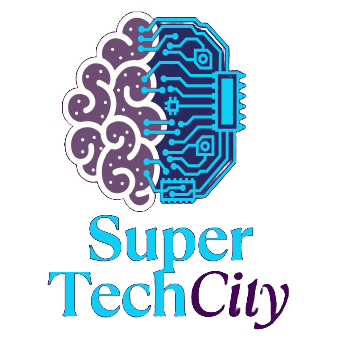The last ten years have seen an extraordinary shift in the technology ecosystem—one that puts powerful tools into the hands of everyday users, democratizing entrepreneurship, creativity, and design. From AI-driven video editors to no-code site builders, a new wave of platforms is dismantling traditional gatekeepers and bringing about a new era of digital creators developing businesses, brands, and content on their own terms.
Among the most significant tools in this new arsenal is the logo maker—a deceptively simple but incredibly powerful piece of technology that’s revolutionizing how individuals and startups define their brand identities. But to truly understand why it’s so significant, we need to take a step back and examine the bigger forces at play in the modern tech world.
The Tech-Driven Shift Toward Empowerment:
We live in a time where the line between consumer and creator is increasingly blurred. Social media gave everyone a microphone. Shopify turned hobbyists into retailers. Canva made everyone a designer. And platforms like ChatGPT, Notion AI, and Runway ML are now putting advanced capabilities—once reserved for enterprise teams or niche professionals—into the hands of solo entrepreneurs, content creators, and side hustlers.
This democratization of ability is what we might call the “DIY Tech Movement.” It’s not about doing it all yourself in the spirit of thriftiness—it’s about doing more, faster, and on your own terms. The barrier to entry has never been lower, and expectations for design and branding have never been higher.
Which brings us to branding—the first and perhaps most important expression of any new venture.
Why a Logo Remains Vital in 2025:
Despite the rise of transient content and minimalist web experiences, the logo remains the cornerstone of brand identity. It’s the visual handshake that introduces your brand to the world. Whether launching a SaaS product, opening a neighborhood coffee shop, or starting a Twitch stream, the logo is one of the first things people notice—and remember.
But herein lies the problem: great logos previously required a combination of expensive design software, creative genius, and access to professionals. And for a startup brand that’s trying to get off the ground, they’re not resources that are easily attainable. That’s where new logo maker websites enter the picture.
Logo Makers: The Unsung Heroes of Online Branding
Logo makers aren’t just clipart machines or template generators anymore. AI and machine learning power some of them to learn your style, industry, and design tastes and generate smart, flexible, and scalable brand material in minutes.
What used to take weeks of back-and-forth with a design company is now achievable in a few clicks—without sacrificing quality. Some of the best logo makers on the market allow you to:
Customize typography, color schemes, and iconography
Generate branded assets for websites, social media, and merchandise automatically
Export high-resolution, vector logos for scaling and print
Use AI-generated style guides for visual consistency
This isn’t a matter of shortcuts. This is a matter of closing the gap between concept and realization.
The Role of Tech in Creativity: Augmentation, Not Replacement
Critics will probably lament that logo generators (and other AI-driven programs) detract from the value of human creativity. In reality, though, these websites are more likely to be creativity enhancers, as opposed to a replacement for it.
A good logo maker doesn’t tell you what to create—it lets you dream, and also to build on what you already know. It acts as a design collaborator, raising ideas that you wouldn’t have considered, and allowing you to iterate quickly without having to start from scratch every time.
It is particularly powerful for:
Startups: That ought to test out branding concepts quickly without heavy investment.
Freelancers: Who want to present professional portfolios or personal brands.
Non-designers: Who have vision but lack the tools to execute it.
Where Logo Makers Fit in the Larger Tech Story
Logo makers are a great example of how technology is becoming increasingly accessible, more intelligent, and easier to use. They sit at the intersection of user experience, artificial intelligence, and design. But more than anything, they represent a paradigm shift in how we think about creativity in technology.
Instead of picturing design as out-of-reach or exclusive, the tech of today shows us that good design is for everybody—and that brand expression needs to be as iterative, dynamic, and inclusive as the creators and startups it reflects.
We don’t have to select from professional design or DIY tools anymore. Top logo creators fill that gap perfectly.
Looking Ahead: The Future of Branding in a Tech-First World
Looking further ahead, I’d hazard a guess that logo generators will become increasingly integrated into larger brand ecosystems. We’ll have platforms that automatically generate logos as well as pitch decks, website templates, and marketing collateral—each of which iterates dynamically as a brand changes.
Imagine a world where you change your business focus and your brand look and feel and personality changes in real-time—colors, type, logos, and all—in reaction to user feedback, market direction, and artificial intelligence analysis. That is not science fiction; it is being created as we speak in next-generation branding systems.
In this future, the ability to create a brand identity quickly and agilely will be a winning competitive edge. And that makes the humble logo generator not just a useful tool—a strategic one.
Final Thoughts
In the modern fast-paced tech landscape, where speed, agility, and innovation are the kings, logo makers are not “nice-to-haves” anymore—they’re essentials. They allow creators to work faster, express more, and shape their ideas with professional quality and ease.
So if you’re launching a startup, building a personal brand, or just developing your next big idea—don’t underestimate the power of your logo. And don’t be afraid to let a smart logo maker help you create it.
You see, in a world where your initial impression is so frequently digital, your logo is quite likely to be your most valuable asset.





